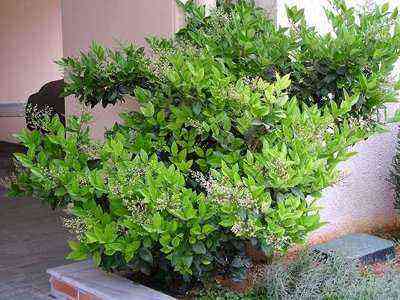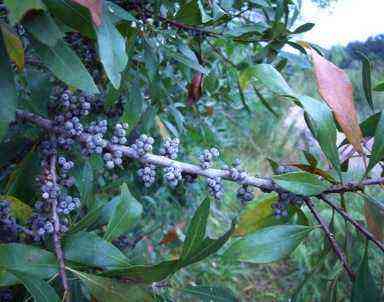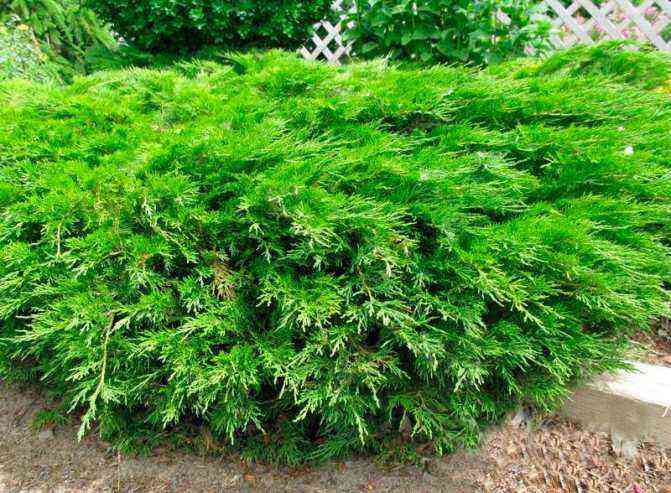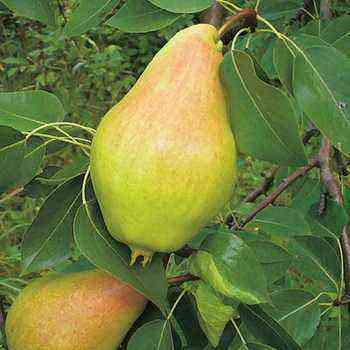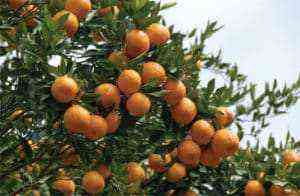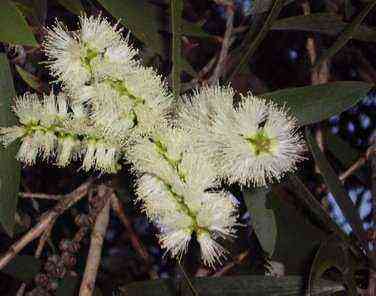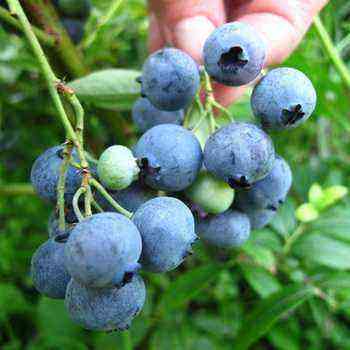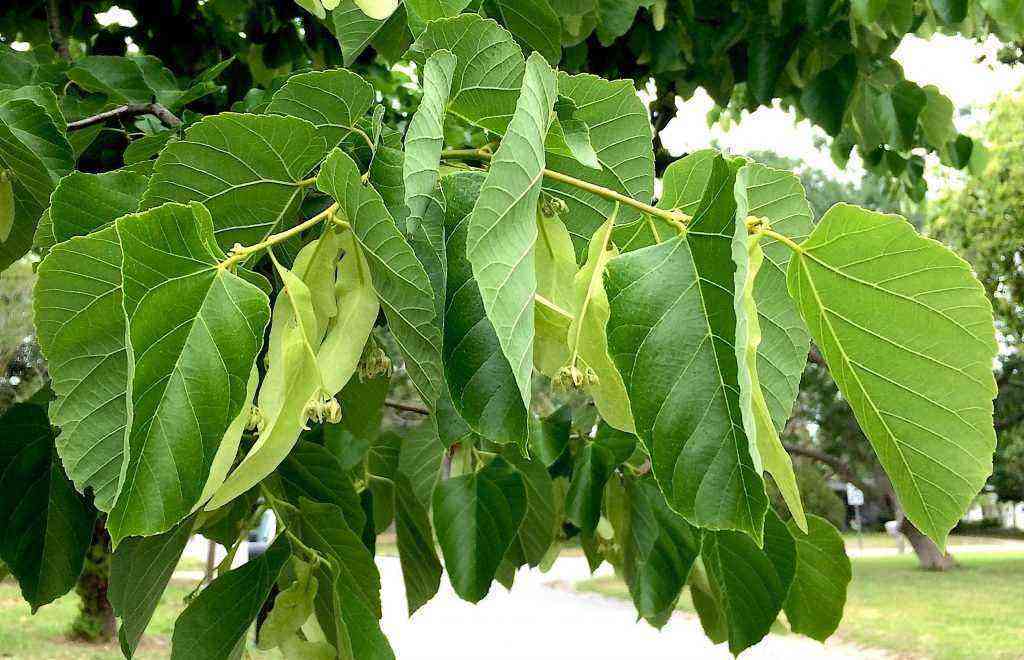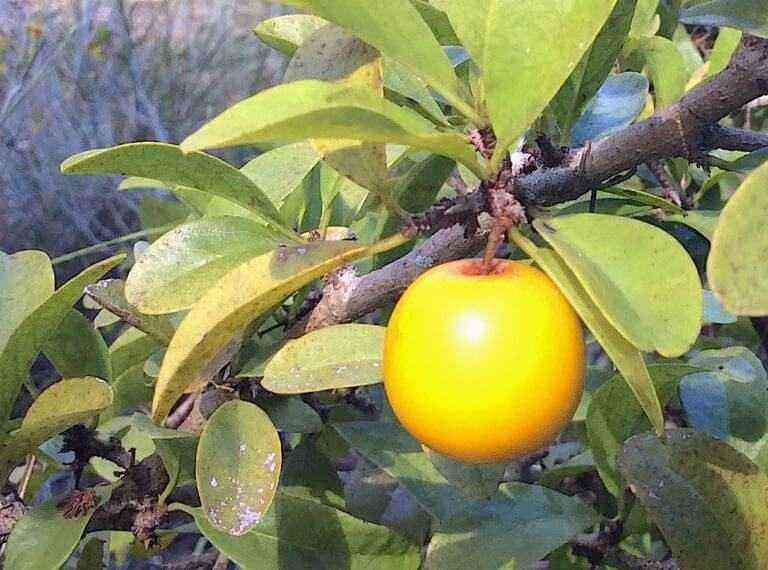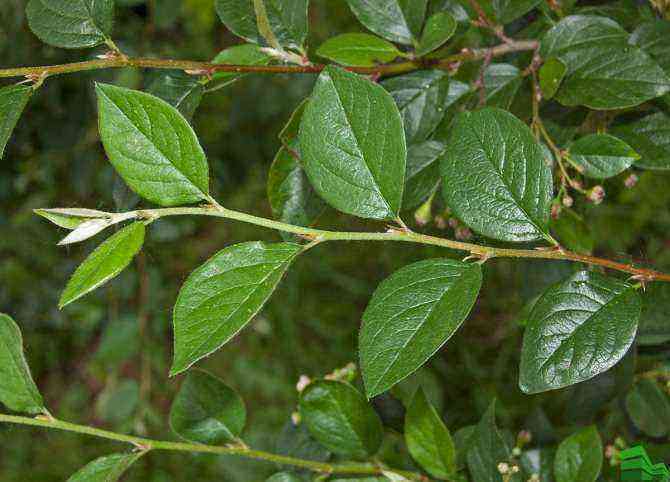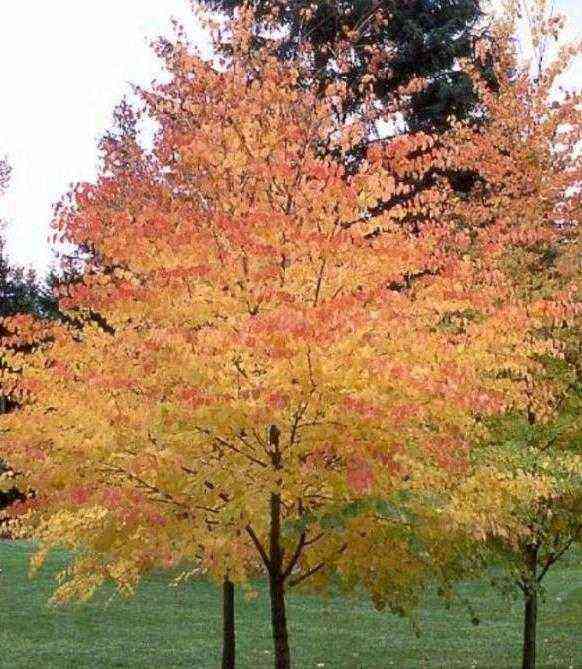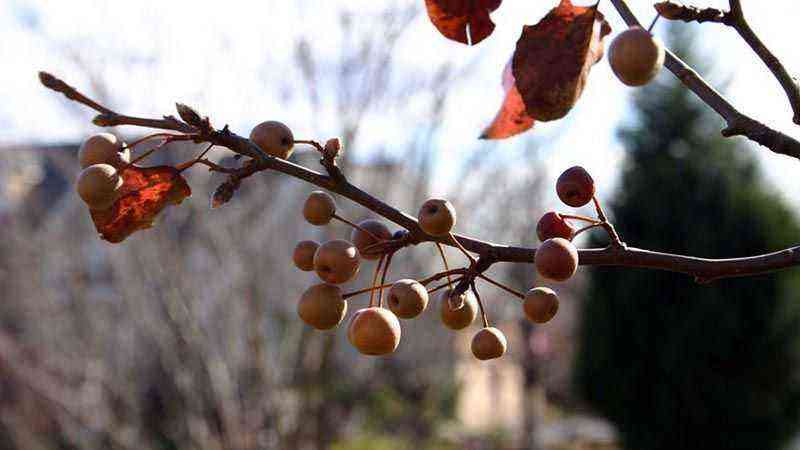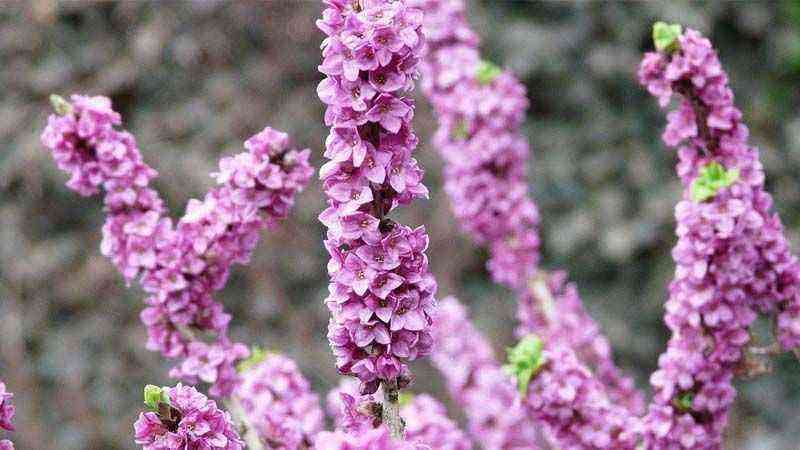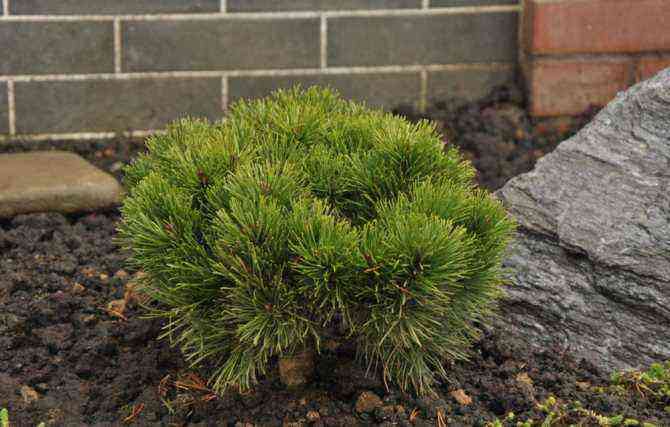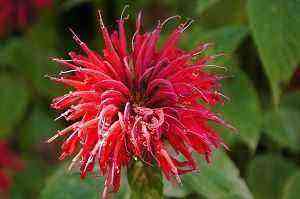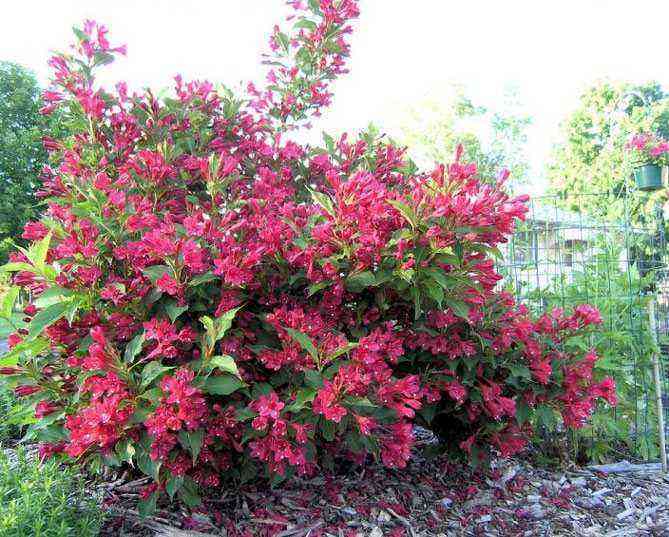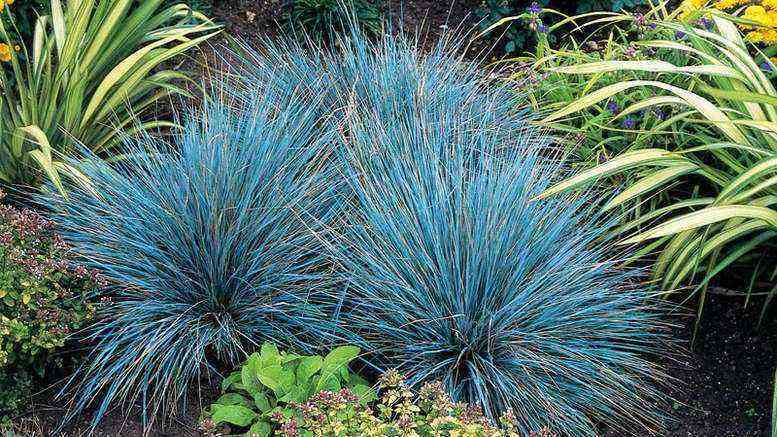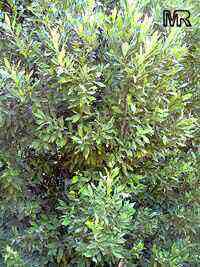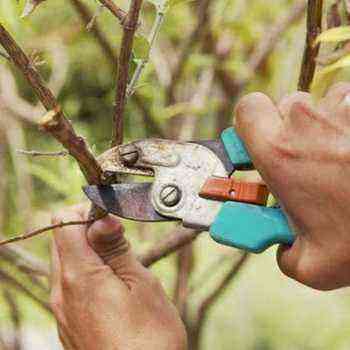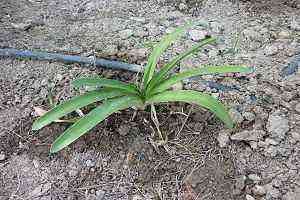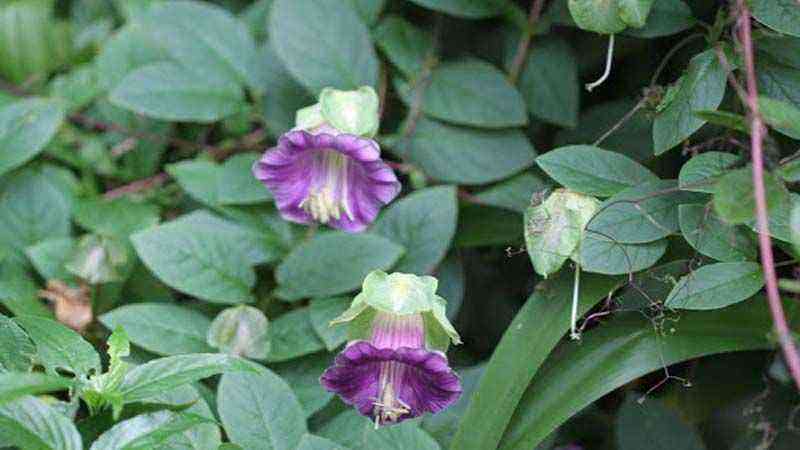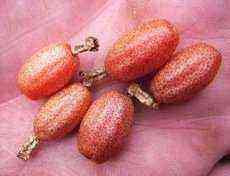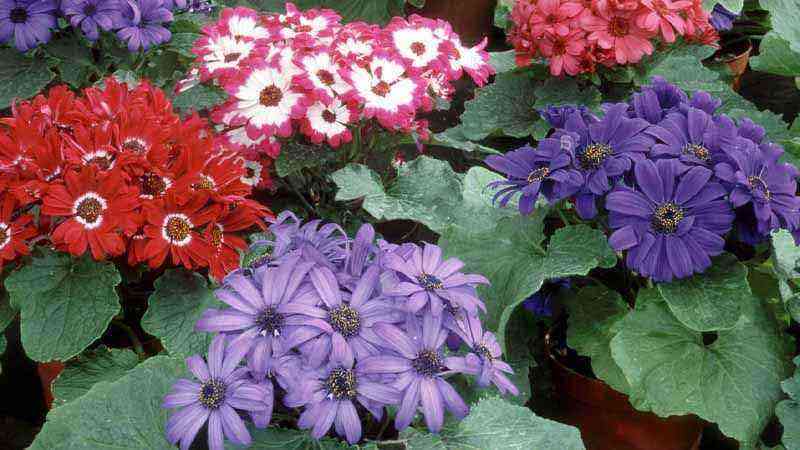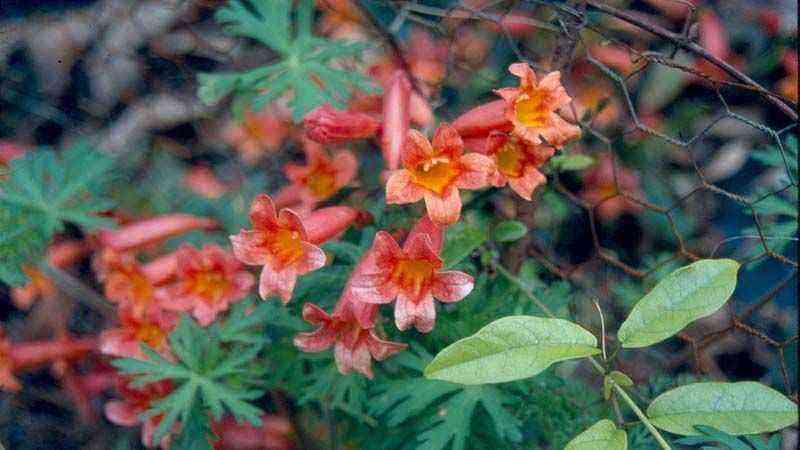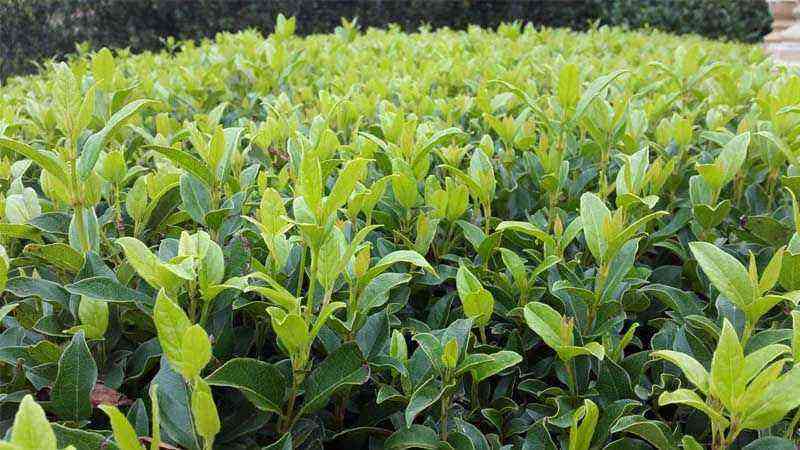Description
Evergreen, deciduous shrub forms and small trees represent the numerous genus Privet of the Olive family. About 50 plant species occupy a fairly wide range: Europe, North Africa, Asia and Australia. Gardeners in Japan, China, Taiwan have the opportunity to admire the greatest variety of ornamental plants.
Privet or Ligustrum is popularly called “wolf berries”. Under natural conditions, some species are capable of reaching 5 m in height. Due to the rapid growth of plants, bending branches and the ability to form a crown, Privet has become quite popular in culture for creating bonsai. Even a beginner can try his hand at any of the easy-to-care species.
Leaves of ornamental plants are oblong, leathery, mostly dark green in color. Only a few members of the genus can boast of a yellowish-golden tint of foliage.
In addition to the spectacular crown, the attention of flower growers is attracted by the long flowering of many types of Privet. From June to the end of August, you can admire the snow-white paniculate or racemose inflorescences of small, fragrant corollas. A bluish-black shade of spherical fruits adorn the branches with the arrival of the first month of autumn. All types of drupes are poisonous.
Representatives of the genus Ligustrum are successfully cultivated as garden, undemanding plants. Only some species do not tolerate subzero temperatures and need a mandatory winter shelter in the open field. Privet is used as a highly decorative “hedge” of winter-hardy representatives, as well as for border and group plantings.
By providing a cool indoor space for your plant to grow, you can easily form a spectacular tree in any of the popular bonsai styles. Ligustrum is little affected by pests and practically does not get sick if suitable conditions are provided for its maintenance.
Characteristics of privet and its varieties
The plant, depending on the species, can be either a shrub or a tree. Ligustrum shrubs reach a height of 5 meters, trees grow up to 15 meters.
Privet leaves are oval, elongated, dark green in color. The flowers are small, white, collected in panicle-like inflorescences. Flowering begins in June-July, depending on the climate of a particular area. Fruits are small, round, black or dark blue (inedible).
Ligustrum is a rather interesting plant. First, it can be both a tree and a shrub. Secondly, it is the so-called semi-evergreen plant. In colder winters, the plant sheds leaves, and does not shed in colder winters.
There are several main varieties of the plant:
- Common privet (Ligustrum vulgare). Branched, deciduous shrub up to 5 meters high. The leaves are oblong, up to 6 centimeters long. The flowers are white, with a cream shade, and have a rather pungent odor. Blooms for about a month. Flowering begins in June-July. There are many forms of common privet: gold, yellowish, pyramidal, gray, weeping, etc. There are also several decorative varieties. For example “Aureum”. It is a small, up to a meter tall, non-flowering shrub with golden leaves.
- Privet brilliant (Ligustrum lucidum). It is a tree up to 15 meters high. The leaves are quite large, 12-15 centimeters long. Cold-resistant plant, can tolerate frosts down to minus 10-15 degrees.
- Japanese privet (Ligustrum japonicum). A shrub of medium height (up to 4 meters), native to East Asia. The leaves are rich green, leathery. The plant is shade-tolerant and frost-resistant.
- Oval-leaved privet (Ligustrum ovalifolium). Small shrub up to a meter high. The leaves are dark green in color, with a cream or golden border (depending on the shape). The flowers have a pungent specific smell. The plant does not tolerate cold winters.
Cultivation
Privet can be propagated by cuttings, seeds and root cuttings. Cutting semi-lignified cuttings (10-14 cm in length) from last year’s shoots is carried out in the fall. They root well in peat and sand substrates in equal proportions. Cool temperature conditions and placement of cuttings under glass promote rapid root formation, and in spring young plants are transplanted into a nutritious, light substrate.
Reproduction of Ligustrum by seeds is a less common and long-term method, but it is practiced among flora lovers. Ripe berries need to be given time to rot, then mixed with the ground and left until the fall of next year. After the first year of life, seedlings can be dived. And only two years later, it is recommended to form bonsai from plants grown from seeds.
Privet is unpretentious in care, grows quickly and branches. In early spring, a shrub or tree needs sanitary pruning, during which it is necessary to remove weak branches. In order to give the crown density, the tops of young shoots are pinched several times during the period of active growth, since the representative of the genus lends itself well to shearing. The interior of the room will perfectly complement the original crown of a bonsai tree in the form of a ball, pyramid and any other intricate figure.
Privet is undemanding to soil. A universal substrate for flowering plants will suit her best for replanting. It is recommended to renew most of the soil in the container every two years, as the root system responds very poorly to transplanting into new soil.
The application of mineral fertilizers for bonsai must be carried out during the period of active growth (April-September) twice a month. In winter, it is recommended to reduce the frequency of feeding to 1 time per month.
Home and garden care
Let’s take a closer look at all the stages of caring for home privet.
Lighting
Japanese ligustrum prefers moderate lighting, shade tolerates well… For several hours he can feel comfortable in the direct rays of the sun, but he should still choose the western or eastern window for him.
Temperature
Japanese ligustrum frost resistant (withstands up to -12 degrees), therefore it is suitable for planting in a garden. Several of these shrubs can become a spectacular hedge, decorate border or varied group plantings. However, the plant will have to be protected from severe frosts.
Indoor home privet can be taken out on the balcony or in the garden in the summer. As on the street, as in the house, you should choose the coolest place for it.
INFORMATION! In winter, at home, she feels best at temperatures from +5 to +10 degrees.
Air humidity
Ligustrum Japanese loves high humidity: from 60% and even higher. Therefore, it will be appropriate to place a container of water next to it.
Or put the tree pot on a tray filled with gravel to be constantly moistened. Spraying should not be neglected: this will not only moisturize, but also rid the leaves of dust, prevent the appearance of harmful insects.
Watering
Given the love of homemade privet for moisture, it is not surprising that it requires fairly frequent and abundant watering… The best option is 2-3 times a week.
It should be noted that at the same time privet is very tolerates drying, but still it is better not to bring it to this and keep the ligustrum in evenly moist soil. Ordinary tap water is fine for watering. In summer it is better to water in the evening, and in winter in the morning.
Flowering
Ligustrum bloom lasts about one and a half months of summer. Its flowers are collected in loose, long and dense paniculate inflorescences of small flowers with a large amount of pollen. Their aroma may not be pleasant to everyone. At the first time of their appearance, the flowers are green, but then they change.
fertilizers
Plant feeding is necessary only during the active period of its growth, from April to September… It is recommended to apply fertilizer twice a month. The minimum amount is possible during the dormant period, in winter: once a month is enough.
GOOD TO KNOW! Great as a top dressing fertilizer for ornamental foliage or bonsai.
Transfer
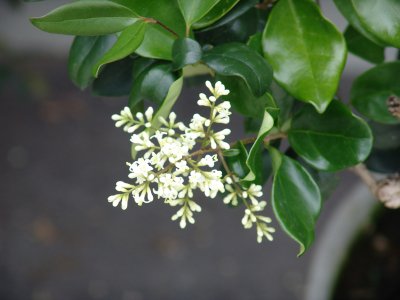

Ligustrum very loyal to soil, accepting almost any of its composition. But every two years, most of the soil in the container is recommended to be changed. A versatile soil designed for flowering plants or specially designed for bonsai is suitable.
Homemade privet thrives on neutral, loose and nutritious soil, optimal acidity which is 5,5-7,5 pH… Good drainage is important, an abundance of loam in the ground has a beneficial effect on the plant. A good soil option is a mixture of two parts of sod land and one part each of leafy soil, peat and sand.
You can replant once every two years privet. In this case, a small undercutting of the root system is permissible. The main thing is not to damage the taproot. After pruning, for some time, you need to ensure that watering is not excessive: cut roots absorb water worse, because of this, unwanted waterlogging may occur.
IMPORTANT! If insect larvae were seen in the ground during transplantation, the soil should be completely removed from the privet roots, and the roots should be carefully rinsed in running water. Before planting, new soil can be disinfected by heating it in a microwave oven or freezing it in a freezer. After that, the earth must be stored at room temperature.
First steps after purchase
Ligustrum is often marketed as a young shrub or an already formed bonsai tree. A careful examination of the ground parts of the plant will allow you to acquire a healthy, full of strength young specimen.
To prevent the appearance of insect pests and common diseases, it is recommended to create conditions with high air humidity from the very first days of Privet’s habitation in the room. Frequent spraying with water at room temperature, especially on hot summer days, will only benefit Ligustrum. In diffused light or partial shade, a representative of the genus will feel great. When choosing a location, it is also recommended to avoid drafts and sudden changes in temperature.
Diseases and pests
Homemade privet with proper care hardly sick… It is also slightly susceptible to the effects of insect pests, especially with regular spraying with water. However, the danger is still represented by worms, caterpillars, weevils, tinder fungi and aphids.
Insecticides will help: powder – for adding to the soil, liquid – in ampoules. It is best to always use different products so that insects do not develop addiction.
ATTENTION! It is necessary to use any preparations against insects very carefully, after carefully studying the instructions and observing all precautions, since the means can have a harmful effect on humans.
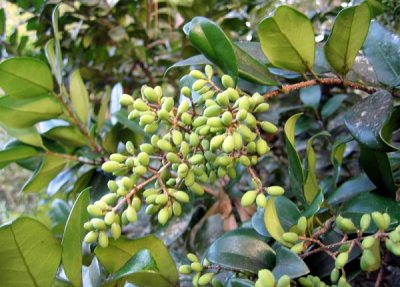
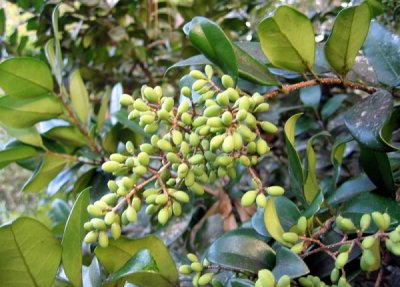
Also powdery mildew is dangerous: it may appear due to excessive acidity of the soil. Therefore, you need to monitor this and, if necessary introduce a deoxidizer (for example, ground limestone or other products).
Whitefly and sooty mildew can occur due to lack of air movement. They can be eliminated by spraying with soap.
In general, Japanese ligustrum does not require special care and is quite unpretentious. He will help the budding bonsai fan to practice this art and bring exotic Asian grace to the interior of the house.
Secrets of success
By placing the plant away from direct sunlight, on the east, west or north side, it is necessary to take care of the temperature conditions in the room for the successful cultivation of Privet. In summer, it is advisable to take the tree out to the balcony or garden, shading it from the burning sun: the plant is not afraid of heat and prefers fresh air. In the autumn-winter period, it is recommended to additionally illuminate the plant and keep it in a cool room, with a thermometer reading of + 11-14 ° С. Higher temperatures lead to leaves curling and falling off, which negatively affects the state of the decorative bonsai crown.
Ligustrum prefers a sufficiently moist soil, but stagnant moisture in the container, especially in winter, leads to root rot. The plant should be watered with settled water at room temperature as the top layer of the soil dries up.
Ligustrum Chinese – a bonsai with many talents
Among the bonsai that are suitable for growing in residential premises, few species can boast of attractive foliage, and beautiful flowering, and original berries, and even an interesting silhouette. And all these talents are fully characteristic of ligustrum, or privet. As a houseplant, only one species from the extensive genus Ligustrum is grown, but indoor Chinese privet (Ligustrum sinense) is the most ornamental subtropical shrub of this genus. The fact that Chinese ligustrum is found mainly in China, Japan and Korea can also be indicated by its appearance – the color of the plant is pronouncedly Asian, the origin is felt both in flowering and in lines.
Indoor privet – evergreen, but easily shedding leaves under unfavorable conditions, shrubs, which are most often formed in the form of trees. Despite the fact that the height of bonsai usually ranges from 15 to 50 cm, privet is increasingly found on sale, which are formed not with the help of bonsai art, but with simple topiary craftsmanship – strict, large shrubs and trees, the contours of which were set by simple pruning. The height of such a ligustrum can reach up to one and a half meters. The bark is dark, showy, strikingly smooth, with a slight sheen, it looks old even on the youngest branches. One of the main advantages of privet is very good branching, creating a dense, massive-looking crown and providing strict silhouettes, provided it is formed. The leaves are small, oval, very delicate. The color of the greens is rich green with a coldish emerald tone. The surface of the leaves is glossy.
The flowering period of indoor privet always falls in the summer, as if anticipating autumn. The main flowering wave is usually observed in August. Even if they are not large, but on miniature trees, charming white four-petal flowers in graceful brushes seem very attractive anyway, but their pleasant aroma further enhances this impression. After flowering, the black berries of the fruit are tied at the ligustrum, which in room form seem much more catchy than in the garden. True, fruiting for ligustrum is considered rather an exception, evidence of the optimal conditions for its maintenance.
How to prune bonsai properly
The goal is to give the desired shape.
Methods – pruning all “unnecessary” shoots that grow.
Means – specialized scissors, nail file, knife. For the processing of slices, a special paste.
Time – all year round, but the ideal time for global interventions would be March-April.
There is no need to be afraid to cut your pet too much, it is important to remove the tops and side branches in a timely manner and regularly, then the tree will develop evenly and build up a powerful dense green mass.
screenshot_4.jpg
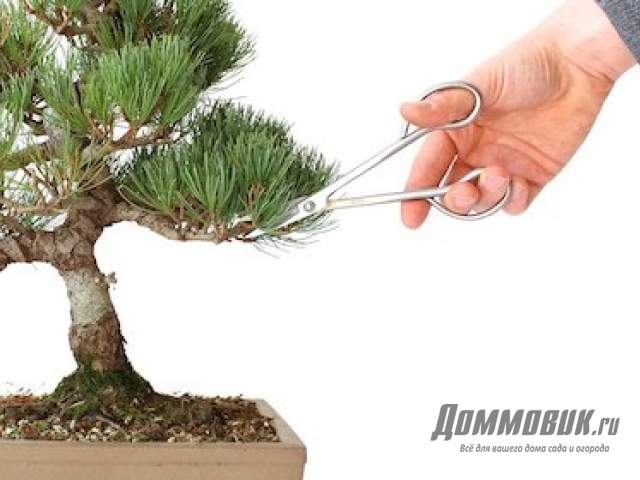
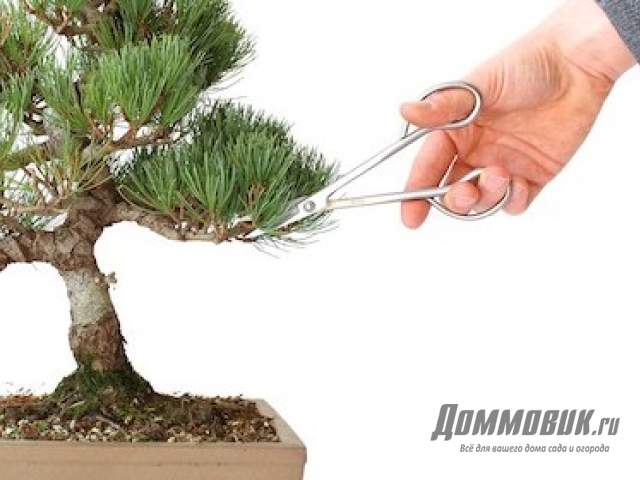
A small nuance: for conifers, not cutting is used, but plucking with fingers, but the use of specialized tools (scissors) will lead to yellowing of the needles.
screenshot_5.jpg

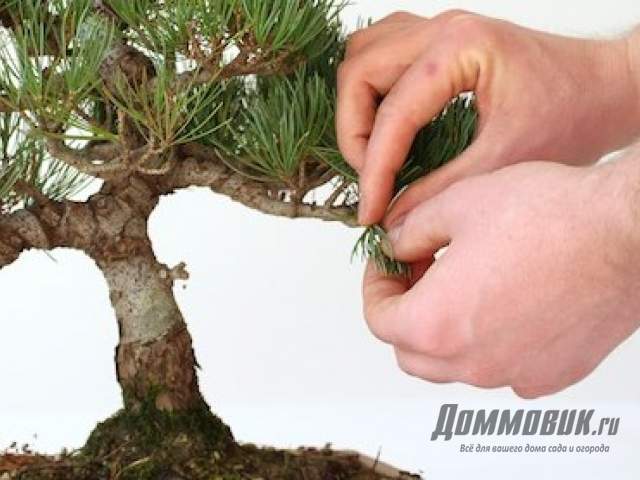
General rules for those wishing to know how to properly prune bonsai:
- You need to be patient and think carefully about the future image of the tree. There is no need to rush to cut everything at once.
- The optimal proportions for a tree in the ratio of the thickness of the trunk to its height will be 1 to 7. The lowest possible bonsai are valued most of all.
- First of all, all powerful, strong shoots are removed, since they visually thin the common trunk. Moreover, it is almost impossible to direct them properly.
- When shaping a tree, you need to make sure that the top is strictly centered and directed upward, and the side shoots are carefully guided to the sides, without covering the inner branches.
screenshot_7.jpg
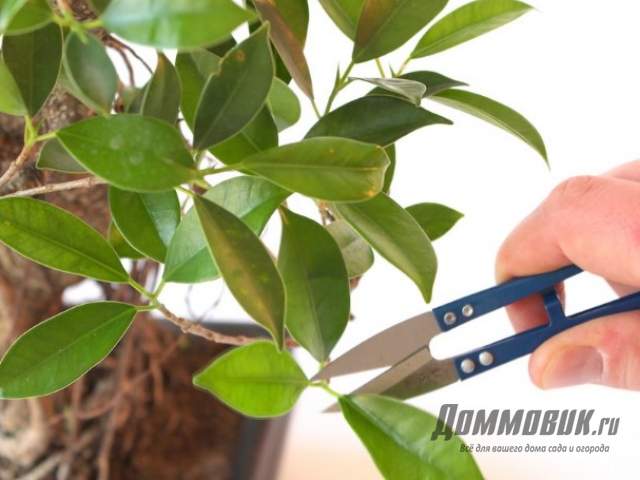
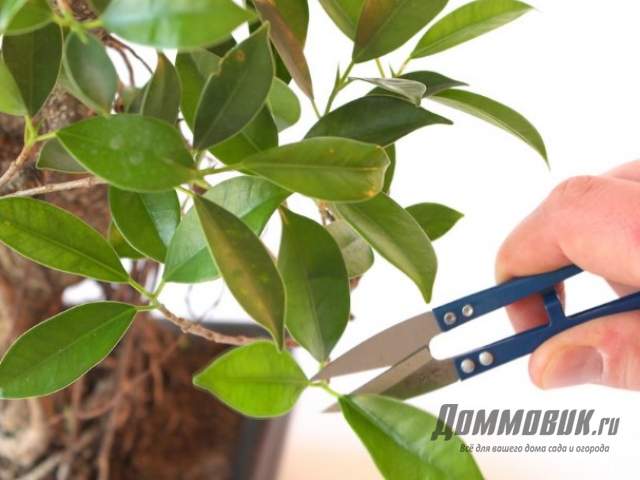
- Only the lower part of the bonsai can be bushy, rising higher you need to carefully thin out the branches of the front part. Below the trunk, 1/3 of the total height, as a rule, remains naked.
- The main powerful branch can gracefully descend as low as possible.
- Remove all closely growing (adjacent), ugly, deformed shoots that do not lend themselves to wire forming.
- After a good pruning, the crown looks much more modest than originally intended. It is in this case that the best results can be achieved.
- After a basic haircut, the plant is certainly allowed to rest for at least a couple of months.
- In the number of moldings, they are guided by the growth rate of the plant and its botanical appearance. Some people like frequent interventions (ligistrum), while others, on the contrary, no more than once a year (podocarpus).
Possible problems
If the rules of care are violated, privet is exposed to the following diseases.
- Leaves turn yellow and fall – drought or waterlogging of the soil.
- Light spots appeared on the leaves – a mosaic spot, the source of which may be aphids.
- Grayish spots on the leaves – powdery mildew.
- Dark green spots on the leaves – increased acidity of the soil.
Common privet Is just a wonderful plant. It can decorate not only your garden, but also the interior of the house.
Of course, you will have to make a lot of effort to grow privet at home. But for the sake of such a spectacular indoor plant, it is worth working hard.
And for the most curious, we suggest that you familiarize yourself with the video about privet
Keeping needles and shoots small in conifers
Some of the coniferous representatives in natural conditions have long needles. Disproportion significantly disturbs harmony.
This flaw is corrected by skillfully applying some tactical steps:
- It is worth significantly reducing watering and starting to use soil depleted in minerals. In addition, feeding should also be done less frequently.
- Special trimming also slows down the growth of the needles. To do this, in April and May, young shoots are cut from the tops. But not completely. At first they are allowed to grow a little, and then they are broken off by two-thirds.
- During the summer, new shoots are formed on the branches covered with needles, which are given a year to grow. Then the procedure is repeated, but above them.
- It is worth closely monitoring the growth process – two- and three-year-old needles are trimmed or plucked altogether.
How to choose bonsai plants?
Setting off on the long path of growing living miniatures, you should immediately understand that not every plant is suitable for this. This creativity, raised from the depths of the centuries, has its own traditions, styles and directions.
The maple is truly considered the king of the kingdom, and the pine tree is given the place of the royal person. But behind the external beauty, incredible difficulties are hidden. After all, conifers grow for a very long time and are very whimsical to care for. Even in natural conditions, pine is very difficult to take root, and what can we say about the artificial climate.
When starting to grow dwarf trees, you should pay attention to the following species, which are considered favorites:
| Coniferous | Deciduous | Fruiting and flowering |
| Thuja Juniper Larch Cypress | Birch Maple Oak Rowan Willow Hornbeam Beech | Guayava Myrtle Magnolia Peach Apple Plum Acacia Pomegranate Various Citrus |
Photos of bonsai from various types of trees:

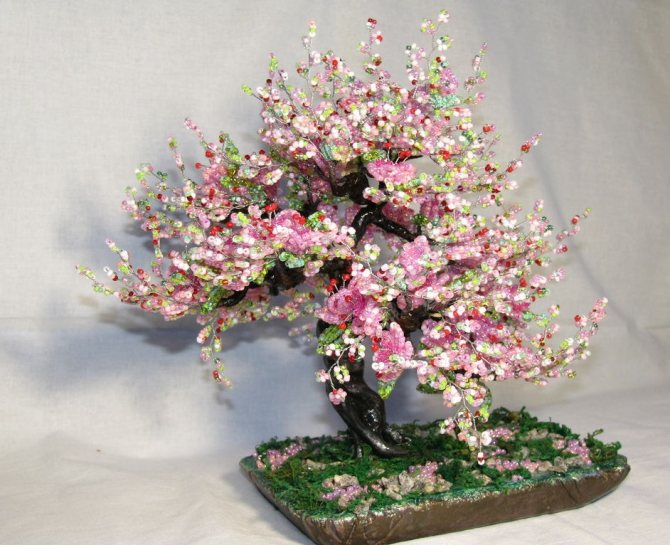
Peach
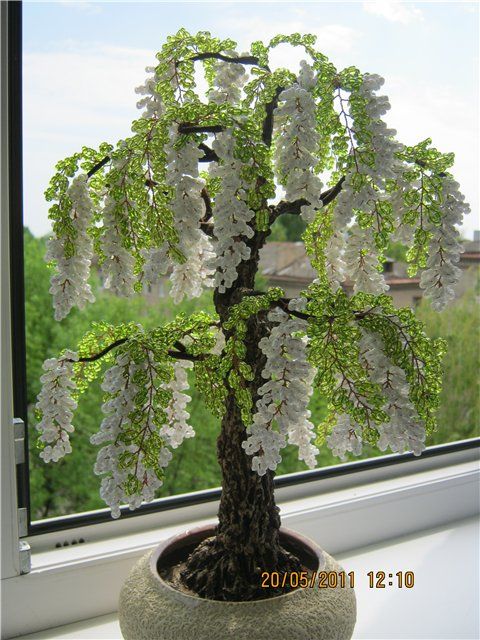

Acacia

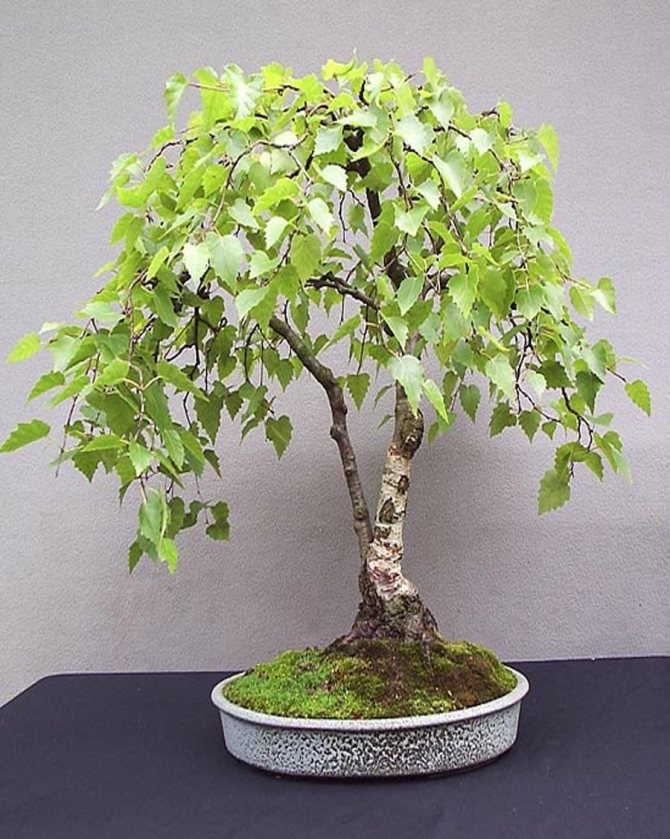
Birch
Beech
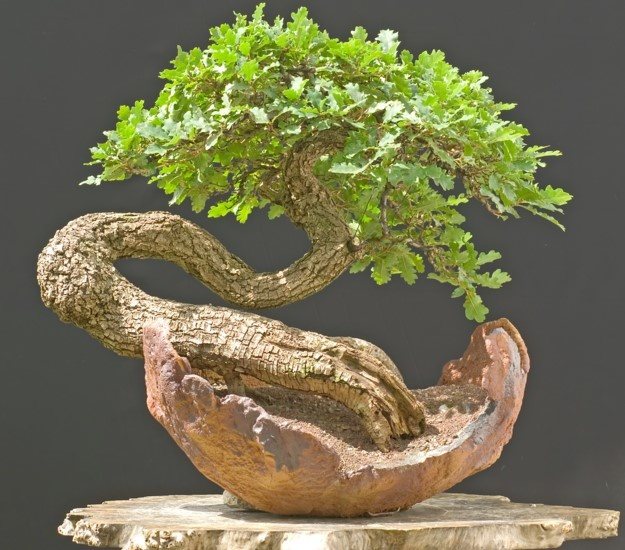
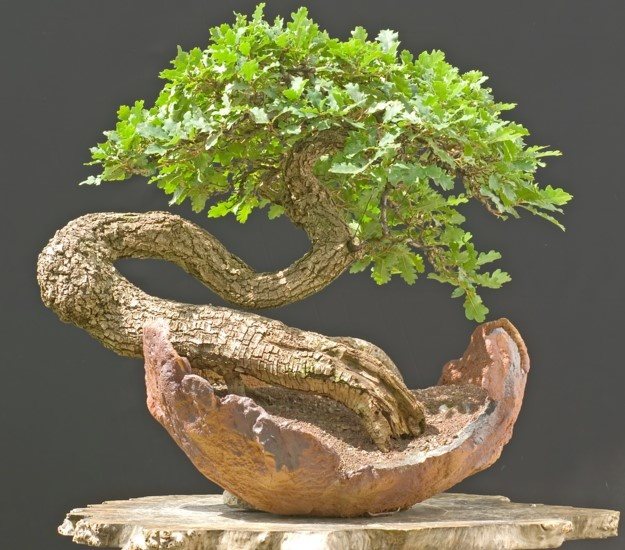
Oak
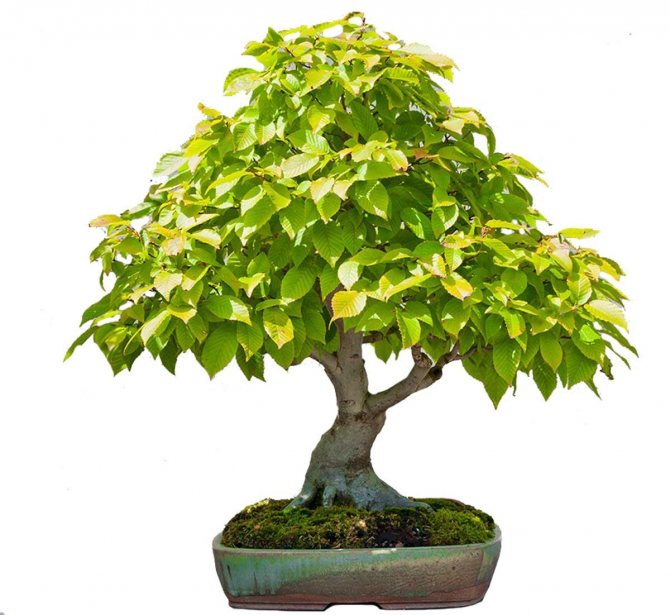
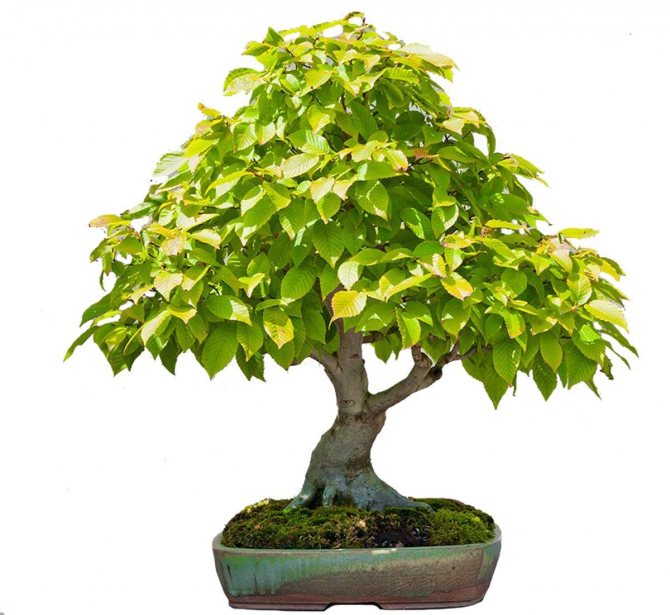
Hornbeam
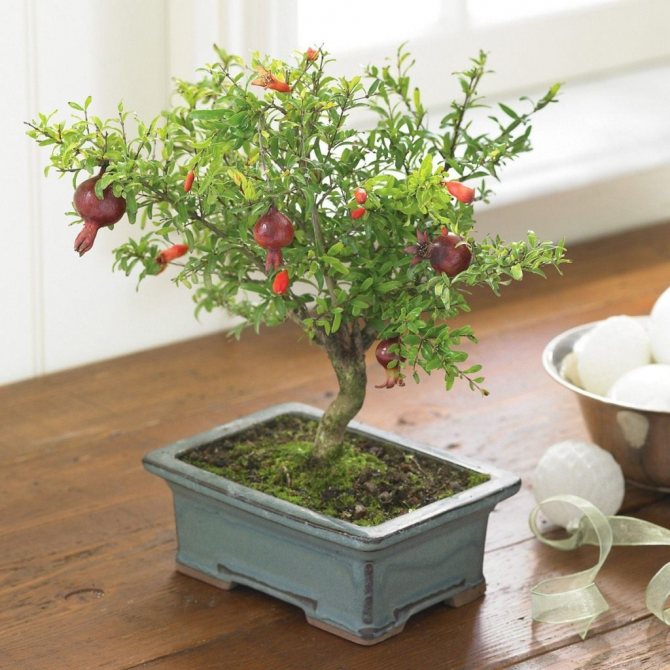
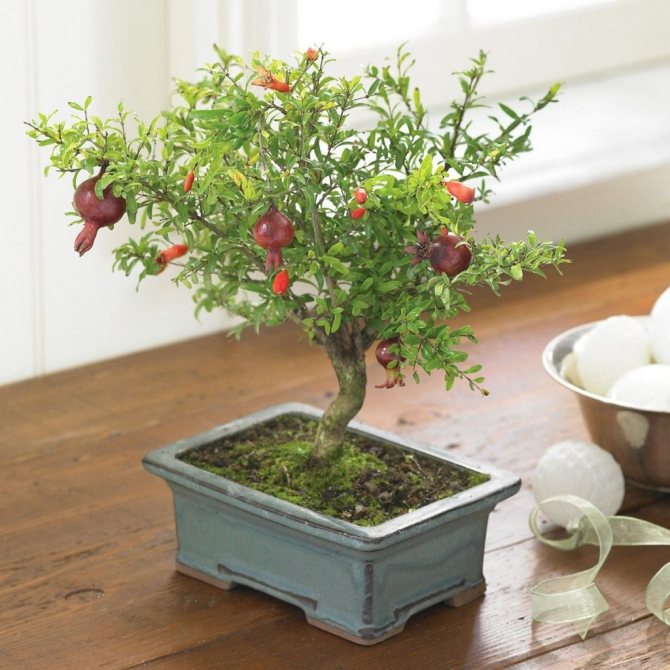
Garnet
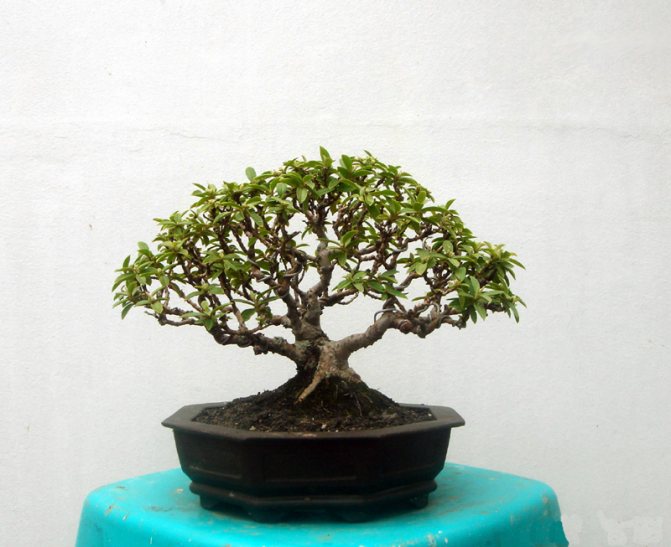
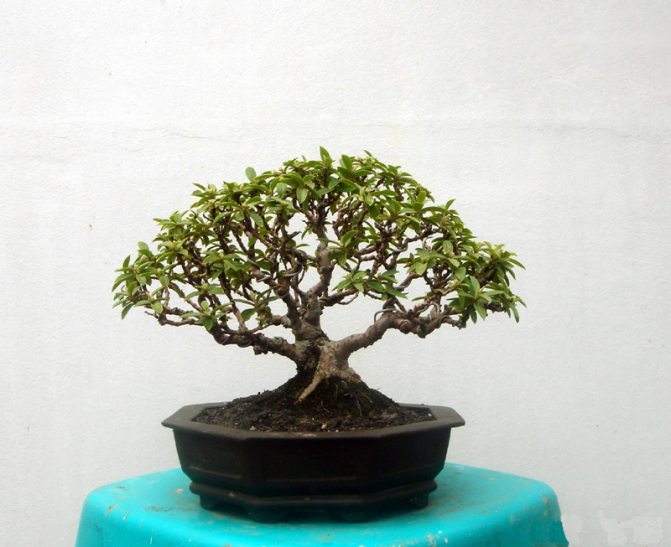
Guayaquil

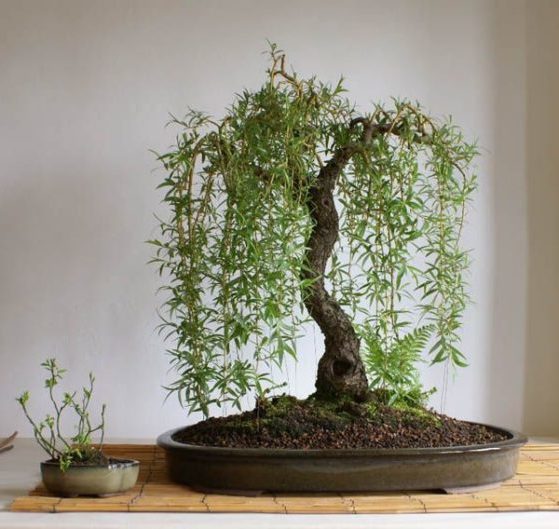
Willow
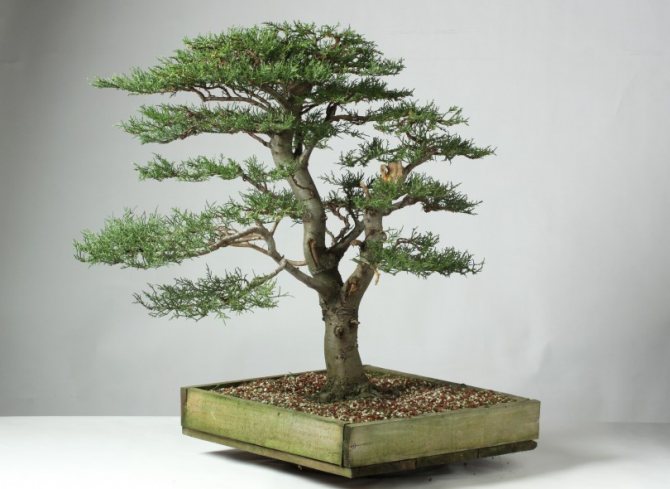
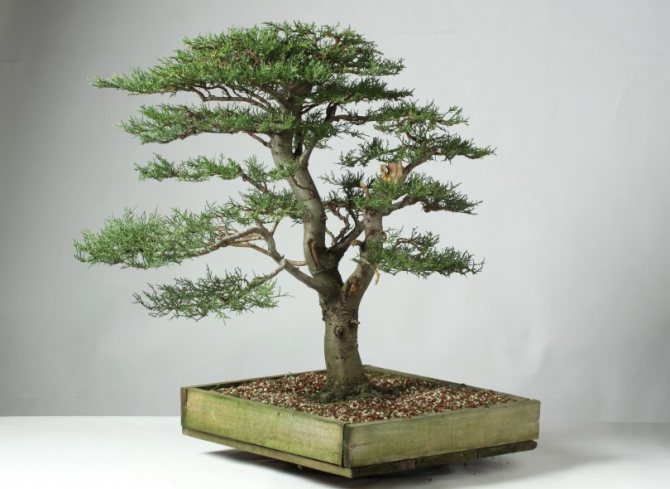
Cypress
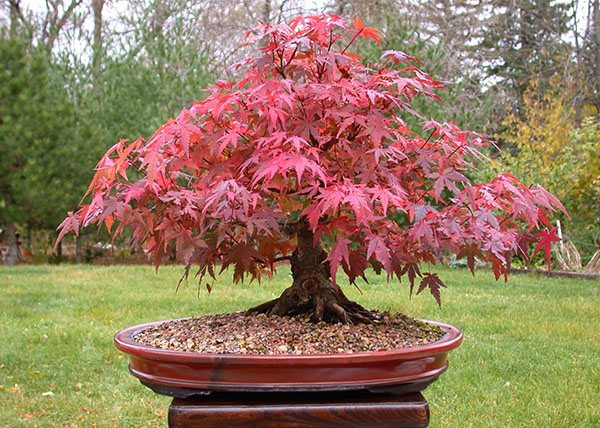

Maple Lemon
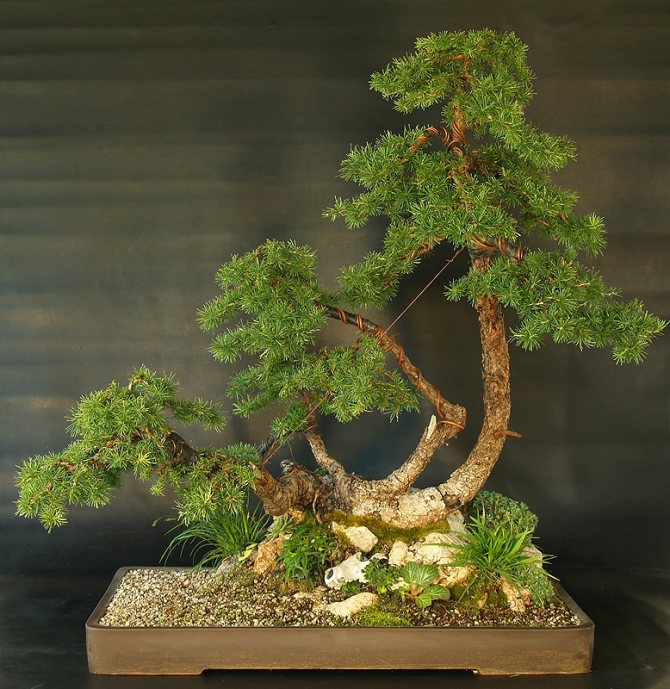
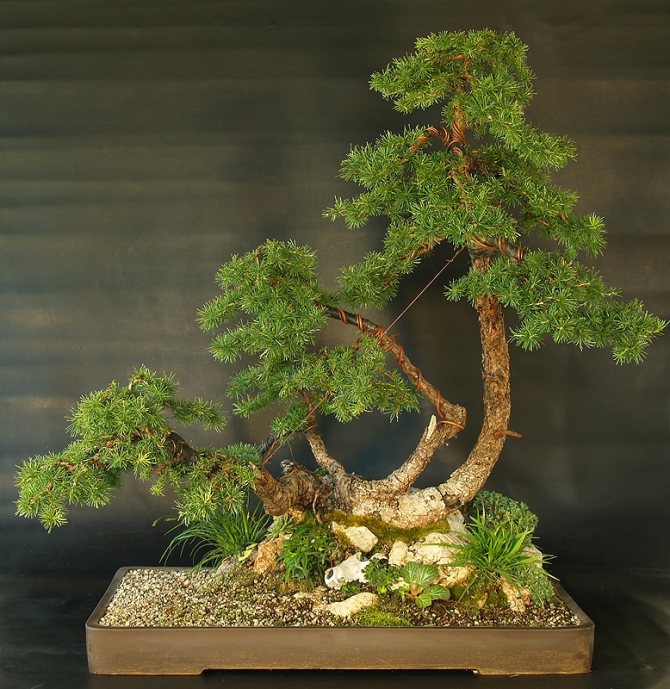
Larch
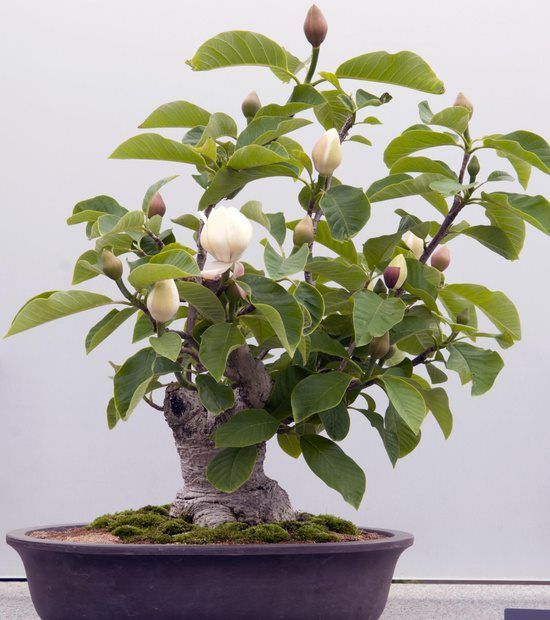
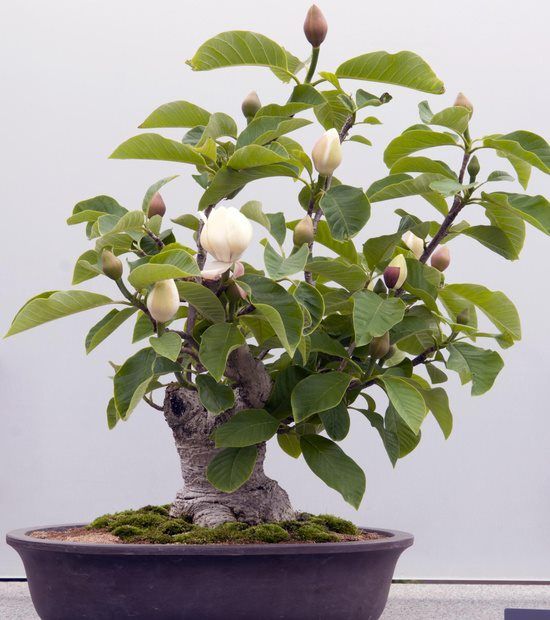
Magnolia
Myrtle Juniper
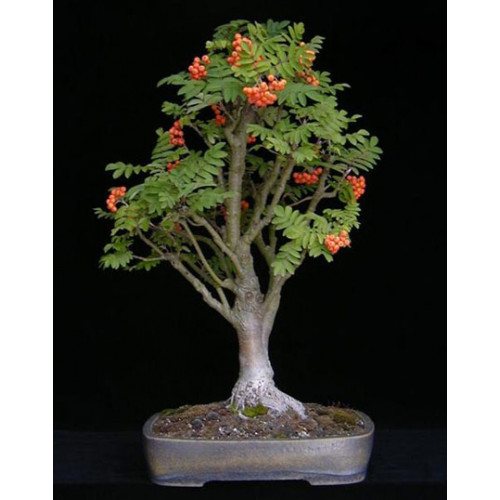
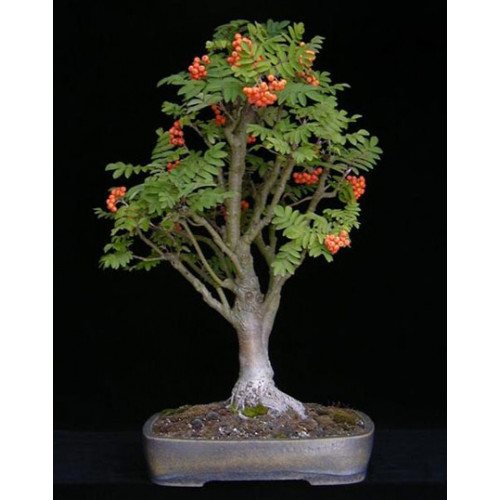
Rowan
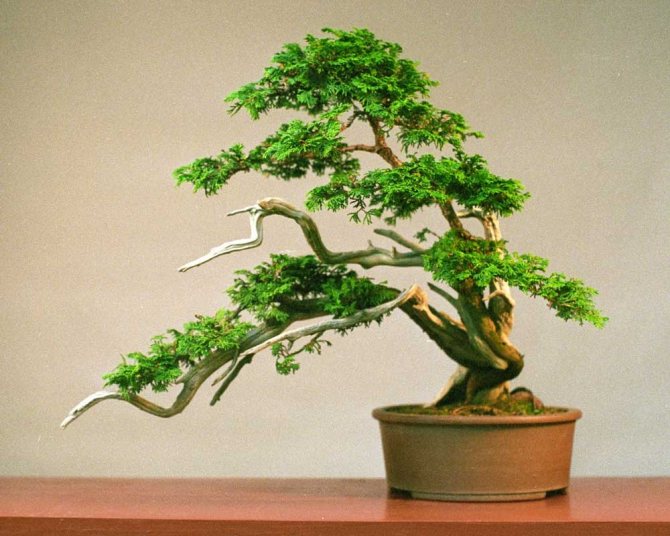
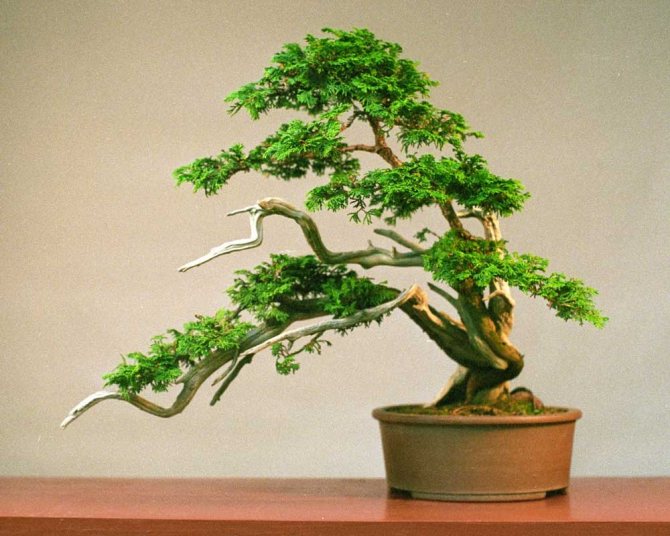
Thuya
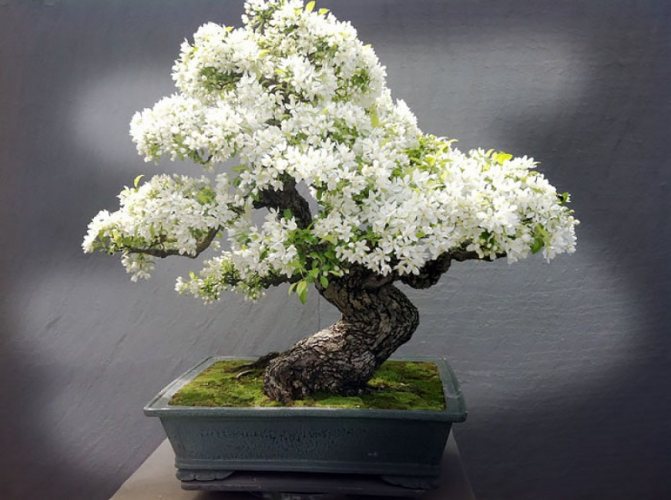
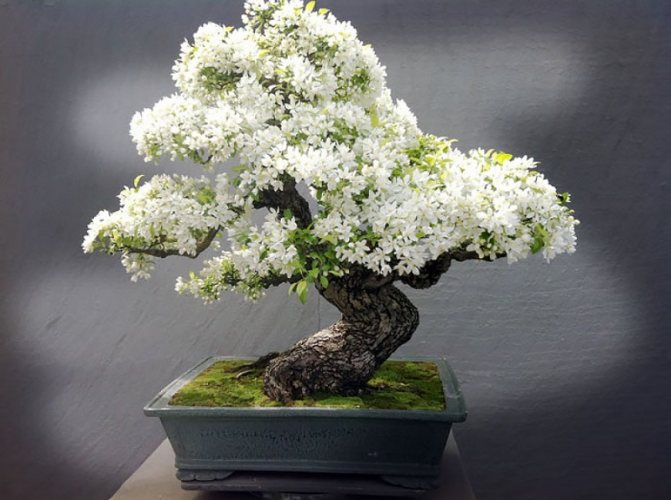
Apple tree
Often, green wizards, when choosing a type of tree, are guided by its beneficial properties – in addition to the traditional generation of oxygen, some trees are able to disinfect the air, suppress harmful bacteria and other microorganisms present in it.
With this approach, special attention deserves:
- laurel noble;
- ficus Benjamin;
- hibiscus chinese;
- Arabian coffee;
- boxwood evergreen;
- Japanese privet and euonymus;
- grapefruit;
- figs;
- lemon;
- muraya is exotic.
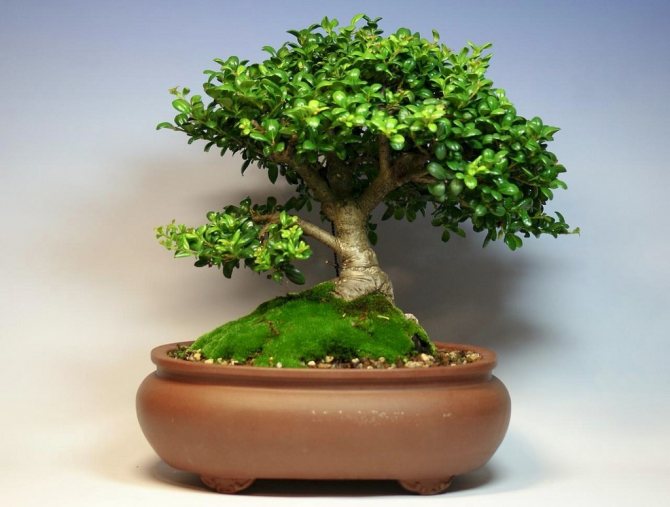
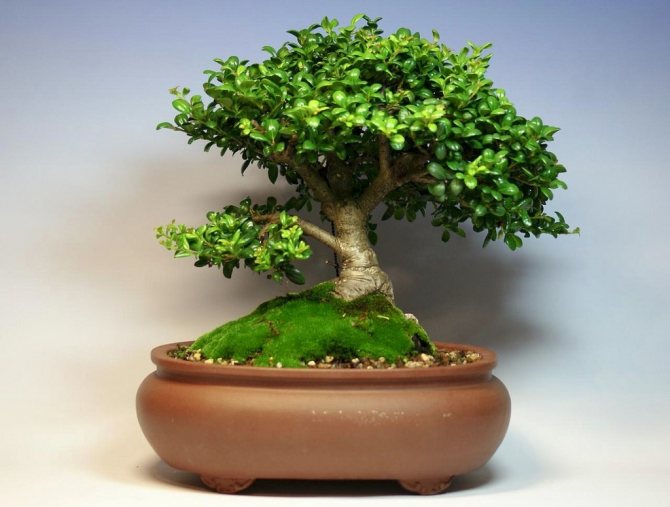
Photo: Bonsai from boxwood
For beginners at the beginning of the path, it is worth stopping at young plants, from which it is easier to create living masterpieces.
The trees should be densely branched starting from the ground itself.
When choosing, feel free to carefully excavate the ground to inspect the root structure. On vaccinated specimens, the inoculation point must be investigated especially – it should not be clearly visible.
Particular care should be taken when choosing coniferous seedlings. In the depths, behind the lush outer needles, there may be bare branches. It will take a lot of time and effort to revive them.
Reproduction of Chinese privet
Indoor ligustrum is most often propagated by cuttings. In spring, the plant can cut standard cuttings up to 7-10 cm long from young twigs. Rooting of Chinese privet in an ordinary sandy-peat substrate under a hood or film, subject to stable humidity and temperature (from 16 to 20 degrees), allows you to get a large number of seedlings. Plants are planted either one at a time or 2-3 branches (it all depends on the desired shape of the tree or bush) in the minimum individual containers. It is advisable to start the formation from the very beginning, because the plant develops amazingly quickly and reaches its optimal size in less than a year after rooting.
You can get Chinese privet and seeds. Sowing is carried out immediately in individual containers, 2-3 seeds each, in a peat-sandy substrate. Under glass or film, the crops are placed in conditions similar to cuttings. If you want to grow single trees, the plants are planted after the appearance of the second or third true leaf. The transplant is carried out with the complete preservation of the whole earthen coma and only after the roots have mastered all the available substrate.
How to plant privet
It is required to plant a shrub in an area that excludes shade. The soil should be slightly damp. It is necessary to choose a neutral acidic soil structure. The plant is characterized by resistance to frost, withstanding temperatures down to -30 degrees. In this case, you do not need to insulate.
Root system
This shrub has a fibrous root system. Therefore, it is necessary to domesticate the soil nearby. Single bushes can be planted by digging holes 40 × 40 cm. For curbs, trenches are dug in width and depth by forty centimeters. The length of the trench should match the curb. Before planting plants, ash and lime should be poured.
It is worthwhile to prepare the soil for planting a plant. For this purpose, a mixture is prepared, including sod land, humus and sand. This soil composition does an excellent job of keeping moisture. This property has a beneficial effect at the initial stage of growth (growth is 60-65 cm). Planting in compliance with all requirements allows 99% of the seedlings to survive.
Gardeners advise planting ligustrum in a checkerboard pattern. As a result, it will become lush, wide. The compactness of the plantings ensures the planting of privet in a row row. The spacing between seedlings should not exceed forty centimeters.
Soil care
Experts do not recommend planting hedge privet in wet, overdried soil. In the spring, near the bushes, it is necessary to carry out work related to digging up the earth. Such work is accompanied by fertilization of the shrub with phosphorus, nitrogen minerals.
Popular: Planting a loosestrife for an alpine garden
The complex of works must be carried out at the end of spring. During this period, it will be well moisturized and warmed up. The land under the bush is mulched using grass, sawdust, bark. Due to this, soil fertility is preserved, the root system of the shrub is protected from drying out.
